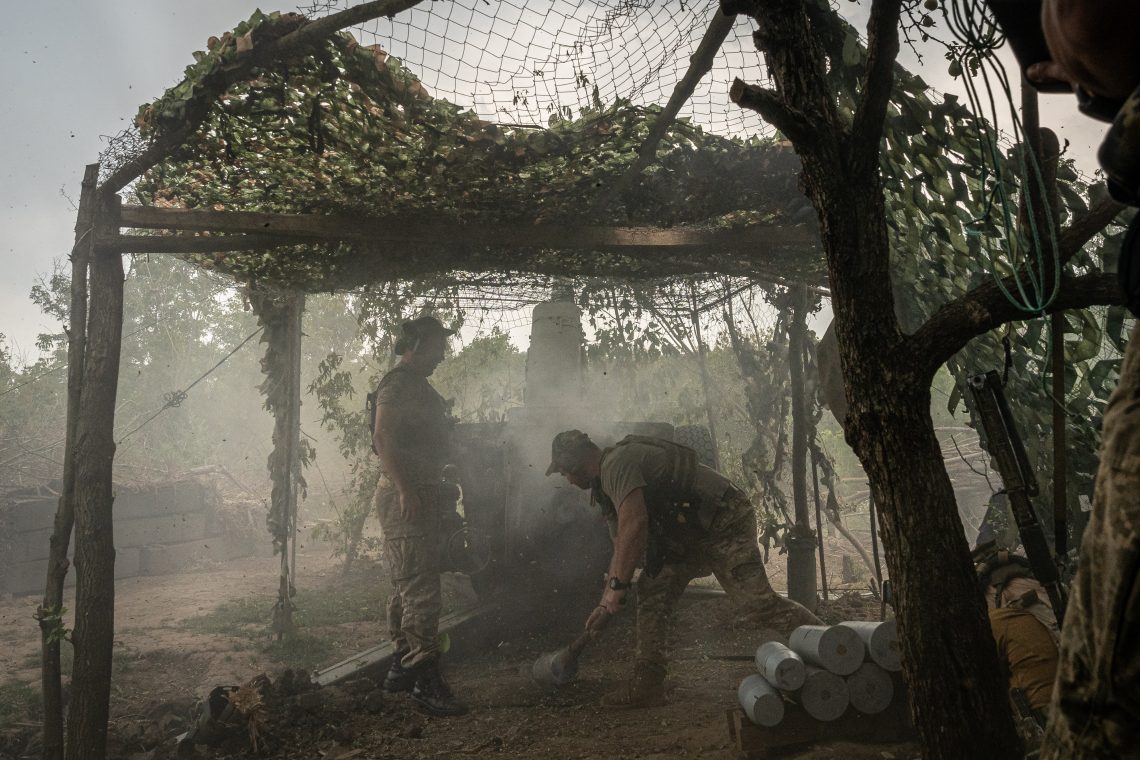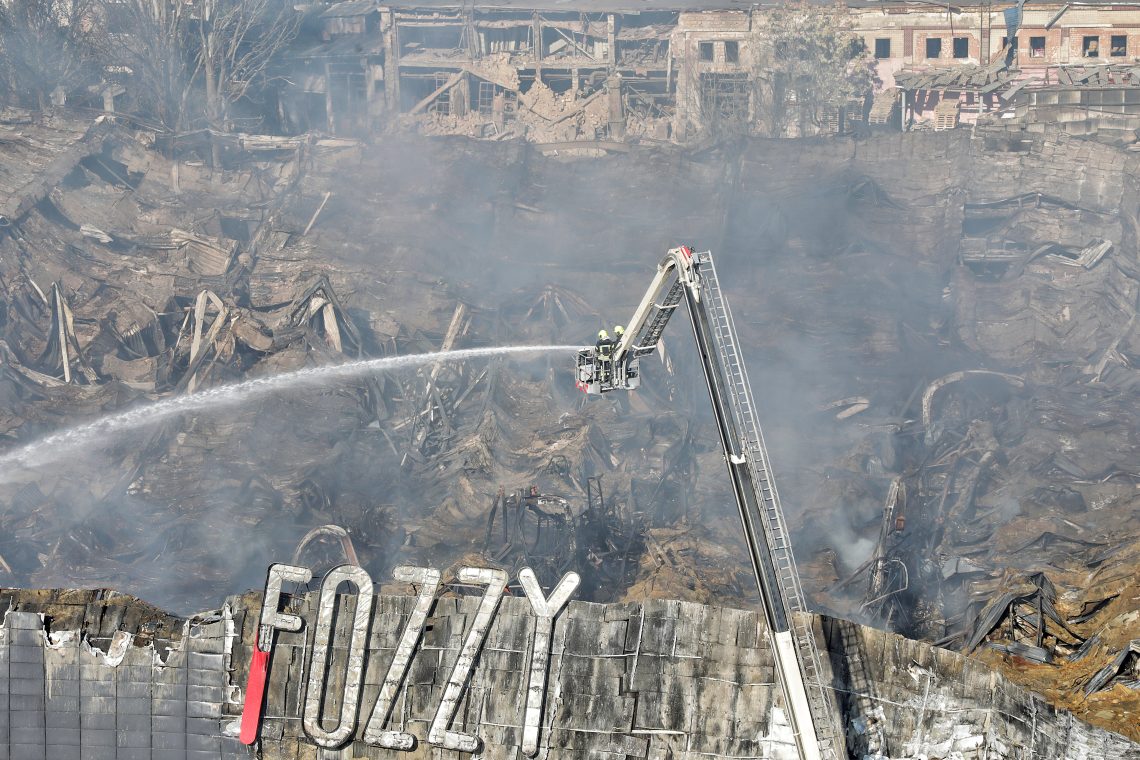Eyewitness to war: Assessing the Ukrainian capacity to fight
The intensity of Ukraine’s resistance to Russia will likely remain strong for at least another year, but worrisome problems need to be solved.

In a nutshell
- Further advancement by Russia into Ukraine is almost inconceivable
- A sophisticated yet decentralized resistance is active throughout Ukraine
- Ukrainians will, however, exhaust themselves if the war goes on for years
The West’s material support is an important, but not overarching, factor in Ukraine’s long-term ability to resist Russian aggression. The entire nation, including volunteer partisan resistance fighters, civilian logistics networks and the Ministry of Defense, is mobilized against Russian occupation. This integrated system is robust and shows no immediate signs of substantially waning.
Cracks are visible, however, including internal friction from excess bureaucracy, poor risk assessment and growing rifts among combat sectors, besides general operational inefficiencies. These flaws, while concerning, are no doubt prevalent and magnified on the Russian side.
Much of the current news and intelligence cycle rightfully centers on the West’s financial and military support for Ukrainian resistance against Russia’s all-out invasion. Analysts, pundits and journalists alike are preoccupied with the state of Western weapons shipments, the latest “game-changing” technologies and the geopolitical implications of further aid packages.
These issues are clearly of vital importance. But as the great military theorist Carl von Clausewitz (1780-1931) noted, there is a “vast array of factors, forces and conditions in national affairs that are affected by war,” not least being a national spirit of resistance. This spirit – civilian support, army morale and logistical capacity – is alive and well in Ukraine. However, there are hints of problems that may dominate and ultimately determine Ukraine’s fundamental strategic position.
For more on Russia’s war against Ukraine
Only two scenarios for Russia’s war against Ukraine
Could Russia disintegrate?
Ukraine’s long path to victory and NATO
A view from the battlefront
This report is a granular, boots-on-the-ground appraisal of the morale, mood and mechanics of frontline Ukrainian military and civilian operations. I present here scraps of tangible observations from which a broader extrapolation can be made. After a half-dozen trips to the Ukrainian frontlines working with special operations forces, mainline army units, partisan resistance fighters and civilian logistics networks, I can report firsthand that the Ukrainian nation is, in fact, a fully mobilized resistance machine.
This may seem unsurprising and self-evident, but such mobilizations are historically rare and are transient in nature. To that end, several positive points are worth noting along with a few concerns.
Decentralized national effort
National resistance in Ukraine is a distinctly decentralized phenomenon. Far from being coordinated by the government, let alone the Ministry of Defense, an enormous share of logistical capacity (perhaps as much as 50 percent) is borne by informal networks working loosely under the banner of “Ukraine Will Overcome.” These local volunteer centers not only supply important material support but are also integral in repairing torn social fabrics. One such center I visited in Kostyantynivka was giving financial and emotional support to a woman who had lost an eye in a missile attack as well as a man who lost his son to torture by Russian soldiers for ostensibly providing intelligence to the Ukrainian military. These community centers are in every city, town, village and rural crossroad.
Informal networks provide support that is crucial to sustained military operations and warfighting morale. For example, units I worked with were supplied with home-canned goods (tomatoes, pickles, beets), bedding (foam mattresses, homemade cloth sleeping bags), uniform cleaning services and vehicle maintenance (everything from basic oil changes to homebuilt .50 caliber machine gun mounts). These sorts of goods and services, in addition to a constellation of other daily necessities, keep a fielded army functioning and content. Operating in austere locations without moistened wipes, for example, (a staple in frontline life) is a known misery, and wipes are not being delivered by NATO.
Morale is high across all social sectors and long-term commitment to independence is firm.
Morale is high across all social sectors and long-term commitment to independence is firm. Within the civilian population, there is bloodthirst for retribution. Women I spoke to near Khmelnytskyi opined that nothing less than the complete extermination of Russian occupiers would soothe their inflamed souls. This “take no prisoners” outlook is endemic – old women revel in the opportunity to provide poison pies to Russian soldiers, sisters of fighters wish they could “tear their enemies to pieces.” I asked whether they could imagine holding to this kind of grim resolve if their homes were bombed, they were forced to drink from puddles or to eat their cats. They responded: “Why not? If our grandmothers could do it, then so can we.”
The historical import of this conflict is lost on few. Within frontline military units, there is a somewhat greater degree of pragmatism but no less dedication. Denys, a brigade commander, noted that “we should not destroy our resources” in futile frontal assaults but was simultaneously reluctant to drop surrender notices I printed out for Russians because “they are animals” and “will only stop when they are dead.” He and many others evince the profoundly long view that “if we don’t take back our territory this year, we will get it in the next 50. We can be patient.”
Foreign fighters and trainers have added a significant layer of institutional knowledge and additional fighting capacity. I have worked with Chechen fighters who bring a great deal of combat experience and courage to the frontline. American, Canadian, British, Australian, Colombian, Venezuelan and New Zealander volunteers (to name but a few) have come to fight within specialized foreign units. Assistance by more senior, especially United States former military trainers, is widely available and quite effective. The number of U.S. flag patches, for example, appearing on Ukrainian gear has exploded in recent months – offering a tangible reminder of both foreign engagement and solidarity.
Considering Russia’s indiscriminate long-range missile and rocket attacks, Ukrainians have effectively adopted a widely dispersed weapons storage and billeting strategy. Housing troops and storing weapons caches in civilian homes throughout forward areas is ubiquitous. I witnessed multiple garden sheds filled with Javelin, NLAW and Stinger weapons systems, along with abundant small arms and ammunition. The disadvantages of lacking central inventory control and allocation are handily offset by the advantages of eliminating large ammunition dumps and barracks. The civilian population is, by and large, happy to cooperate – many offering their vacant houses and apartments free of charge to fighters.

Cracks in the edifice
No nation, regardless of the threat it faces, can maintain this level of broad mobilization indefinitely. Observed weaknesses in this society-wide resistance ought to be noted. These are decidedly organic firsthand examples and should be extrapolated cautiously, but they may hint at what is to come.
Infighting among units
While morale is generally high and esprit de corps is basically sound, the inevitable stress of sustaining combat operations over 18 months has taken a psychological and emotional toll. This manifests most commonly in generalized finger-pointing and suggestions that “other” units are not pulling their fair share, or that one’s own unit is more effectively fighting the katsapa, a derogatory slang word for Russians. This is common enough among all large organizations even in peacetime, but the level of tension is reaching palpably unhealthy levels at the Ukrainian front. I witnessed a physical confrontation between two soldiers from different units – an altercation pregnant with possibilities for degraded future combat effectiveness.
Driving like fools
One of the unfortunate realities of wartime operations within civilian populations is that drivers of military vehicles feel an inveterate urge to drive aggressively (my troops and I did it in Afghanistan, too, I am afraid). Part of this is from a justifiable rush, and some drivers explain that they drive this way to “keep sharp” for driving under fire. But much of it is misplaced machismo and it causes substantial harm. I witnessed, for instance, the aftermath of an accident between a military light pickup and a local Lada sedan which destroyed not only the vehicles (and probably the drivers) but two electrical poles as well. When fighting a protracted conflict against an enemy 10 times larger, these kinds of avoidable losses exact a disproportionate toll.
The internal cohesion of the Russian regime is at a substantial risk of decay within the nearly 20 percent of Ukraine that Russia occupies.
Poorly understood risk analysis
In the fog of war, bad decisions are common – but overly common in Ukraine. For instance, a unit I worked with refused to use top-end civilian laser rangefinders for fear that they would be detected by a broad-spectrum Russian “Spider.” Such Russian hardware does indeed exist but is deployed haphazardly. Rather than determining exactly where and when such countermeasures exist, the rangefinders are summarily dismissed, eliminating a potentially very valuable tool in the Ukrainian arsenal. Similarly, any observed hiccup in drone operations (loss of control, loss of signal, etc.) is credited to “Russian jammers.” Unremarked is the fact that similar hiccups occur with drones that are oceans away from Russian jamming operations. Unclarified cause/effect correlations reduce not only drone deployment effectiveness but other types of offensive/defensive tools as well.
Excessive bureaucracy and profiteering
Government heavy-handedness and misspent money exist at certain critical nodes. As noted earlier, broad elements of the working class offer their goods and services free of charge to the cause. More sophisticated interests, meanwhile, especially those integrated within a labyrinthine bureaucracy, enjoy 20-40 percent profit margins which must be haggled and wheedled away by those willing to challenge established blocs. While buying multiple bolt-action sniper rifles from Ibis, a large outdoor supplier, I was disturbed by the level of naked self-interest at play. It poses a serious problem to Ukraine’s ability to arm flexibly and quickly some of its best resistance fighters.
As von Clausewitz said: “The degree of force that must be used against the enemy depends on the scale of political demands on either side … but [these demands] seldom are fully known.”
Political demands are critical to the overall capacity of a nation to effectively wage war. In Ukraine, the political environment heavily favors continued resistance, but it is not without inherent limitations. Luckily for Ukraine, political demands are at play on both sides of the conflict, and in this respect, Russia is at a distinct disadvantage: the national will of Ukraine dwarfs its otherwise colossal opponent.
Scenarios
It is unlikely that today’s level of nationwide resistance support will remain for years to come. The cumulative impositions of a wartime footing simply cannot continue indefinitely.
What is likelier: The strength of society-wide resistance will remain strong through this winter season (especially if significant advances are made) and will start to wane by this time next year if a perceived stalemate endures. Growing poverty and disillusionment will possibly creep in.
The likeliest scenario: The Russian side faces generally much more pressing concerns. The internal cohesion of the Russian regime is at a substantial risk of decay within the nearly 20 percent of Ukraine that Russia occupies in five regions – Kherson, Donetsk, Luhansk, Zaporizhzhia and Crimea. More importantly, the political bonds within the Russian Federation itself are substantially impacted, and the prospect of splintering is quite real.
That would be good news for Ukraine. It means that further Russian advances into Ukrainian territory, aside from limited tactical frontline adjustments, are practically inconceivable and would merely reinvigorate national resistance.












